Harvesting potatoes
2019The 2019 harvest was again under dry conditions. Also this year we harvested 3 pumas 3. Both machines were equipped with AVR Connect this year. this is a communication module that forwards all data from the harvester (including yield measurement) to the AVR cloud. All this data is made visible on the AVR Connect web portal, making harvest management much easier. Everyone can also see where the harvesters are and, for example, how much fuel they have left. The transport of the potatoes to the storage is still done with the Krampe tippers and the MAN Agrotruck. This year we also used a 2nd Fliegel trailer with a dolly - tractor combination. An additional combination is a bonus, especially for parcels at a greater distance.
2018
2018 will go down as the driest year ever. It has never rained so little in a year as in 2018. It has not rained from the planting season to after the harvest. Due to this drought, the yields were small and we had a lot of dust
.jpg)
The drought caused not only dust but also high underwater weights and therefore very blue-sensitive potatoes. It was impossible to keep sand in the harvester, as damage to the soil could not be prevented.
2017
In 2017 we started harvesting the early varieties. This year we grew Zorba and Felsina for the first time, which we delivered on land After the positive experiences with last year's MAN Agrar Truck, we decided to purchase it. The 2-axle Krampe tipper also suited me well, but was too heavy per axle, especially in Belgium. That is why we started looking for a suitable trailer. Finally, we opted for a 3-axle aluminum Fliegl trailer. The harvest conditions in the 2017 harvest season were particularly good, which meant that we were able to hurry up during storage. The yields and qualities of the 2017 harvest were also special. good. October 26 the harvest season was over, this is more than a week earlier than normal. The machines have all worked great without any significant problems.
2016
Contrary to the growing season, the 2016 harvest season was relatively dry. Due to the extreme flooding that we experienced in May and June, we lost over 150 ha of potatoes. We have therefore no longer dug them up. The quality and yields of 2016 were also hard to write home about. Especially at the start of the harvest season, we cleared many bad plots of land. During the harvest, too many loads of poor quality were lifted separately for storage. Also during this harvest season we got the Agrar Truck from MAN to the test with the 2 axle Krampe aluminum tipper. Due to the low yields and the smaller acreage, we finished the harvest relatively early. Harvest 2016 is reported as the worst harvest ever. Let us hope that we will no longer experience such a year.
2015
On August 28 we cleared the first Miranda's green. Miranda is an early potato variety that is processed into fries. We have grubbed 2 fields this season. The new Avr Puma 3 and the old Puma + have been harvested together all season. We have done this to increase capacity and more accurately harvest different quality potatoes. The Puma 3 harvested the wet pieces separately and they were immediately processed into chips. As a result, we only hired high-quality consignments to keep. This year too, we carried out the transport of the potatoes to the shed with our cramped tippers. 5 season and we have not had any problems in that time.
At the end of the season, MAN Belgium gave us the opportunity to try out an Agrotruck. Because we were not able to transport potatoes with a truck, we asked Krampe if we could have an Agrotruck Tipper on trial. The 2 Axle aluminum cramped Trailer have been tested with great pleasure. The tipper made this tipper very maneuverable and the aluminum construction made it very light. We would like to thank both MAN and Krampe Warmly for these demos
2014
The 2014 season also started early this year on August 15 with the harvesting of the early potato variety Miranda. {2014-10 puma +} The new Puma 3 was delivered on September 18. This harvester is the successor to the puma + and we are going to test it as a prototype this year. We first took some pictures of the pure machine for the leaflets and then started harvesting. {2014-2-delivery} First we adjusted the new Puma 3 and then started digging up the Making Sense test field. The new Puma 3 is also equipped with yield measurement Yield Master Pro from Probotiq. {2014-4-trial field} {2014-5-trial field2} {2014-6-trial field3} {2014-3-harvest-puma3} On the trial field we have also made the first teaser film to introduce the new harvester to the press. Then we cleared the entire test field and made a video of it.
The new Puma 3 looks very similar to the old Puma + but there are still very large differences. The harvester stands all around on new larger tires that can also be driven at a lower tire pressure thanks to slime technology. This increases the contact surface with the soil by 23% and the new Puma3 is a lot friendlier to the soil. The topper has also been completely renewed and does its job a lot better than the old one. Furthermore, there are fewer narrowings in the machine, so that the chance of clogging is reduced and the capacity is greater. The ring elevator has also been replaced by an elevator bar that can clean extra sand. In the video from AVR below, all the plus points are listed.
{2014-7 details}
The engine and hydraulic system have also been changed so that the harvester still has enough oil at a very low speed (1150 rpm) and fuel consumption (26.5 liters per hour) to run the machine. A new Claas cabin has also been installed and the entire electronics have changed. The new joystick and touchscreen took some getting used to, but simplified the harvesting process enormously. Due to additional automatic functions, the harvester adjusts the beater intensity, for example, to the amount of soil on the first screen mat. {2014-8 details2}
We have harvested with 2 machines all season. Partly because of this and the good weather, the harvest season was soon over.
{2014-9 2 harvesters} The discharge was also no problem this year. We have always driven this year with our 4 Krampe big body tippers. Bart Lodders also assisted with his peekon 3 asser to drive all potatoes to the shed. Of course we also made a film of the past harvest. You can view it below.
2013
This year we also started again early with the harvest of the mirandas. The Puma + is starting its 4th year this season and has been completely refurbished in winter.
After grubbing green we started grubbing up on September 20 to store. Conditions were very good and the harvest went well too.
We also cleared the Making Sense trial field this year with yield measurement to validate all fertilization steps and fertilization tests.
We have also made the following video of this
Because our harvester is now harvesting in the 4th season, we also got several harvesters on demo this year. The first harvester we tried is the Grimme Varitron 470 terra trac. This harvester is very similar to our current harvester, only this machine is on the back of a rubs chassis and the bunker is a whole and 7 tons in size.
We were able to use this harvester for a few days and got a good impression of what this harvester can do. In the video below you can see both harvesters in the work.
At the end of the harvesting season we were also allowed to test the Ploeger harvester. This harvester is also on the back of a crawler undercarriage and has a similar bunker like our puma, only it is larger, about 10 tons.
2012
The 2012 season started on August 18 with the harvesting of the first Mirandas. Our Puma + already started the third season.
The harvester was completely submerged and ready for the new season. The first Mirandas we harvested were on a plot that was very variable in terms of moisture supply. It had a high head that had dried out and a wetter part where the potatoes were still green. The new yield measurement system was also installed and works well from the first moment.
In the above photos you see the screen with half of the first plot on which you can clearly see the difference in yield. The average yield on this plot was 46.9 tons per ha. Even the cramped tippers with the automatic sealing flaps were still fine.
The further course of the season was more difficult. This was due to the heavy rainfall. However, the harvesting went fairly smoothly and without problems.
At the end of the season we had built up a small backlog and we decided to let a contracting company Houbraken digging up with their 2-row Grimme Varitron 270.
The Grimme harvested for about a week, so we were still on time (just before the first frost).
The capacity of the Grimme was very high for a 2-row harvester and because the bunker was the same size as the AVR, this was good for unloading.
All in all, harvesting with 2 machines is certainly not disappointing and perhaps worth repeating.
2011
The 2011 season starts very early for us. This was because a new pigsty had to be built on a plot of potatoes. Due to early construction work, we have already harvested the first potatoes on June 25. Because our own harvester was not yet ready, we were able to use a new 2-row Avr mistral from a Mark baeyens from Kasterlee.
After testing the Krampe bandit in 2010, we decided to purchase 3 new Krampe 3 axle tippers. The main reason for this was to be in order with all the laws of the Netherlands and Belgium at once.
The harvester also received the harvest without many problems this year.
Also this year, Krampe had a film made again of the new bigbody 900 tippers
The capacity of the potato transport was increased considerably by the new tippers. Where we used to have to drive with 4 2-axle vehicles to keep up, we were able to make it this year with 3.3-axle tippers.
The new tippers are also equipped with a cover system from vako, which was specially adapted for us so that it was also waterproof. In the photos below you can see how the flaps fold away next to the tipper.
After loading the tippers, the flaps can also be closed while driving. Thanks to this system, we are now fully compliant with the legislation and we no longer lose potatoes and time due to the covering system.
2010
We started the 2010 season with our old harvester. The first 90 ha we still harvested with our old puma. These were mainly mirandas that was delivered (from land) directly to the factory via the laundry. As you can see, there were already problems with crashing.
Our new AVR Puma + was delivered on September 20.
With the new harvester, we immediately started to store the potatoes.
We have also built up yield measurements on this harvester. We have improved the old system so that it is easier to read the data and so that more data can be logged, for example, resistance that the harvester experiences.
The new AVR Puma + also features a lot of improvements. The first improvement is the use of longer lifting shares so that the lifting chain no longer runs through the ground but above it. Furthermore, all drives are driven directly by hydraulic motors without chains.
Furthermore, the new puma + has wider tires, these are now 900 cm wide instead of 750 cm. The intermediate wheel has also become smaller so that it can be raised higher. The new + is also equipped with a 235 wide roller set. This gives the harvester extra cleaning capacity, which increases the harvesting speed by an average of one km / h.
The ring elevator has also been improved. The active side wall has now been replaced by PVC fingers that are much more durable. After the ring elevator, the 2nd roller cleaner is fitted with 6 sided discs. Also in this cleaning set are now no chain drives anymore and everything is driven directly with hydro motors. The full ministry has now also changed. In the previous puma, all control technology was still Parker. A canbus system from Bosch Rexrot is now being used.
The new harvester has worked well all season under wetter conditions than usual. In this year we even cleared an average of 0.65 ha per engine hour with fuel consumption of 32 liters per hour.
We also tested the new cramped bandit 980 three-axle tipper this season
This three-axle car is not a tipper, but is equipped with an unloading belt. The car has large dimensions because the box is 9.8 meters long and 2.55 meters wide. This makes for a volume of 30 cubic meters, which equals about 26 tons of potatoes. The control of the unloading floor and the tailgate is completely wireless by means of remote control. The car is equipped with a 60 km / h air suspension chassis with 30.5 tires.
In the film below you can see the new Krampe bandit 980 in action.
Of course we also drove our own tippers. The big body 650 Krampe tippers have also done well this year. They have also been regularly stuck, but they are always pulled loose with one or two other pullers.
The new puma + can also harvest in a dog's way. To try this out I once tried to dig up a spray path in a dog walk. With the left mouth, I have lifted the middle 2 rows, so that the rear wheels drove through the original spray path. In this way you can recruit a parcel by spraying the spray path without breaking anything. The 75 cm offset was no problem for the harvester.
The last 3.5 ha of the season was so wet that we decided to mount the tracks. The west track tracks are easy and quick to assemble within 1 hour per wheel. Normally we would no longer grub on these plots, but because the price of the potatoes was high enough, we still made an attempt.
Unfortunately, you can also drive with caterpillars, as you can see in this video below.
Fortunately, we had the last potatoes out just in time because the morning after our last harvest day, the plots where we still had to pick up the harvester looked like this
2009
Season 2009 was another great season. The harvester started its third season and had been carefully checked before harvesting. We started on August 20 with the early potatoes (Miranda) which were processed immediately after we washed them.
It was a very easy year to harvest, especially not too wet.
On average we drove 3 tippers to transport the potatoes home. For parcels that were at a greater distance, we can drive a total of 5 tippers.
In a piece of land where there were large differences in height, I also took some photos showing how the leveling of the harvester compensates for this.
All in all, we had a very good harvest season with a record capacity of 0.71 ha per engine hour.
2008
In 2008 we started harvesting early potatoes early. These have been cleared green and left via our laundry.
The storage season was again excellent. Conditions were slightly worse than in 2007, but capacity has remained the same due to the changes applied after 2007.
The biggest improvements are built in the back of the machine. The stars at the top of the ring elevator have been replaced by discs that clean even better. A boost function has also been built into the ring elevator. This has ensured that the ring elevator was filled up less often.
We have consumed slightly more fuel this season than in 2007. (32 liters hour) We think this was mainly due to the wetter conditions.
Also this year we have a nice movie of the 2008 harvest
2007
Fortunately, there was only material damage and there was still enough time to get new machines delivered on time.
The new Puma was delivered August 25, 2007 including the interchangeable track chassis. This season this machine had to prove itself, because we no longer had a spare machine.
Last year, Krampe kippers introduced its new Big Body model. The promotion video for the type Big Body 650 was recorded at our company. Below you can view the result.
After the first season, just before the fire, in consultation with AVR, we had gone through all the points to improve the Puma. All these points we discussed then had changed in the new machine.
The biggest adjustment that was made was the content of the bunker, which was 7 tons in the first machine and 8 tons in the new machine. The bunker sides have risen about 20 cm to achieve this. The topper was also reinforced and the software was completely rewritten. In addition, a cleaning kit was built at the top of the ring elevator, to increase the machine's capacity in worse conditions.
Due to all the adjustments, we were able to harvest all potatoes with the new Puma, with an average capacity of 0.60 ha per engine hour. And this in fairly wet harvesting conditions. Consumption this year averaged 31 liters per engine hour, which equates to 51 liters per ha. Total downtime for maintenance or repairs amounted to 15 hours for the entire season.
We also tried track tracks for the first time this year. When developing the harvester, it had already been taken into account that the Puma should also be able to ride and harvest on tracks. We have especially experienced the very high ground clearance and the same steering angle as very positive. Changing tires to tracks takes about 1 hour per tire, but the wheels of the pedestrian axle must be removed because of the steering angle of the tracks. The speed of the machine is halved, but the power is doubled. On the road we could still drive 18 km per hour, but all comfort was gone (no suspension of pneumatic tires).
We also tried track tracks for the first time this year. When developing the harvester, it had already been taken into account that the Puma should also be able to ride and harvest on tracks. We have especially experienced the very high ground clearance and the same steering angle as very positive. Changing tires to tracks takes about 1 hour per tire, but the wheels of the pedestrian axle must be removed because of the steering angle of the tracks. The speed of the machine is halved, but the power is doubled. On the road we could still drive 18 km per hour, but all comfort was gone (no suspension of pneumatic tires).
We started on relatively dry soil to test how it would work and how the tracks would respond to steering. After that, we started digging up wetter plots. In the end we left about 150 meters, because these ridges floated out in front of the grubbed.
In the film below you can see our experiences with the caterpillars. It starts in dry conditions and ends in very wet conditions.
2006
After the 2005 season, our old AVR Solanum really needed to be replaced. In the meantime, four-row potato harvesters that could unload while driving were also available from the other brands. AVR itself had just gone through a difficult time in connection with the bankruptcy of the Netagco holding company and had no plans to build a new harvester.
So during the 2006 growing season we had inquired about the possibilities, we had the choice between the Grimme Tectron, the Ploeger and the De Wulf Potato-4ce.
We just couldn't choose between the three options. We think there was a disadvantage to all machines. They all had a harvesting channel that did not narrow like our old Avr Solanum. They were also able to unload while driving.
The Grimme was our slight preference. This machine had the lowest cost of the three machines. The cleaning channel was only quite short, so that the Multisep actually gets all the cleaning for its choosing. The grubbing for the tracks was also not ideal due to the large weight. Consumption per hour was also very disappointing (60 liters). The capacity under good conditions was also maximum at 90 tons per hour. This is largely due to the capacity of the Multisep (2.80 wide).
De Ploeger was comparable to our AVR in terms of harvesting quality, but due to the rather complicated construction of this machine, it was the most expensive. The high weight with a full bunker on tires also proved to be unfeasible. The machine was therefore only supplied on tracks.



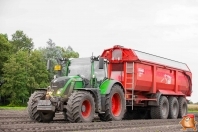
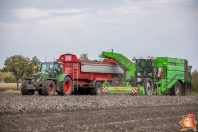
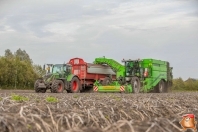
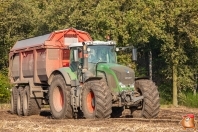
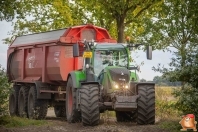
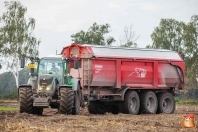
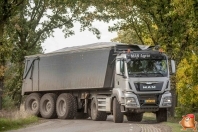
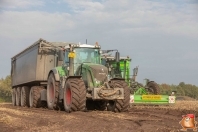
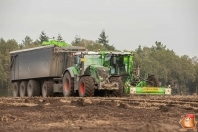
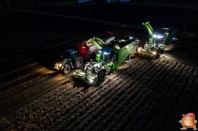
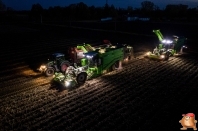
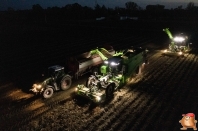
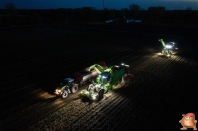
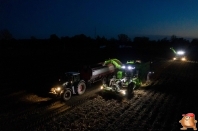
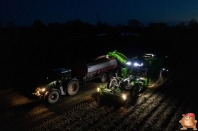
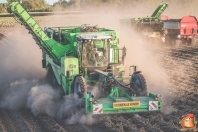
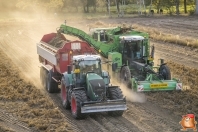
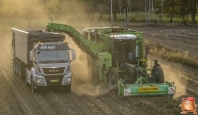
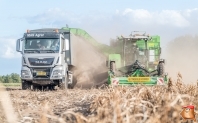
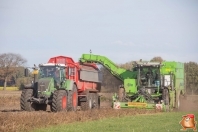
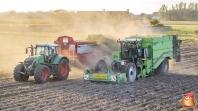
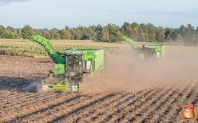
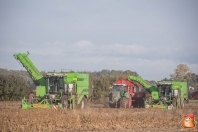
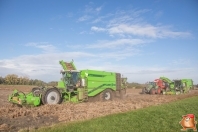
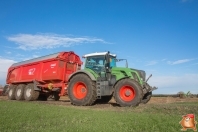
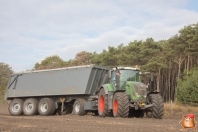
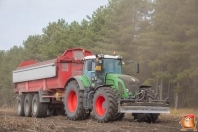
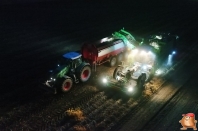
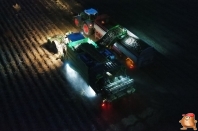
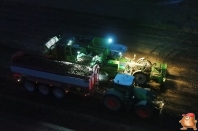
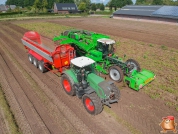
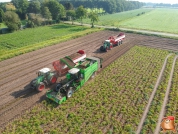
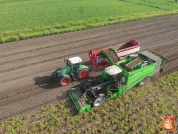
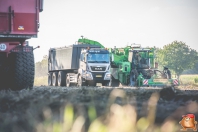
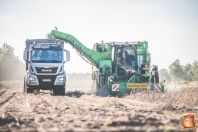
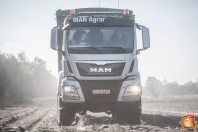
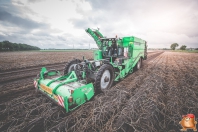
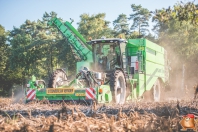
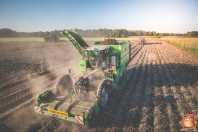
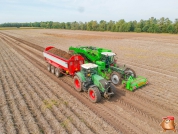
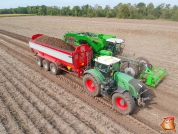
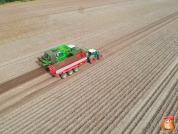
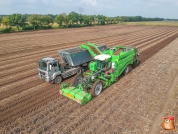
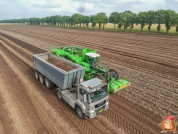
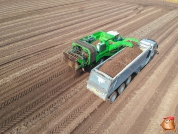
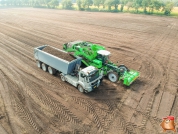
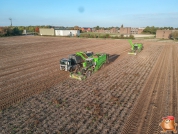
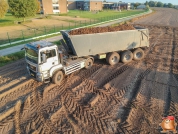
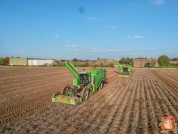
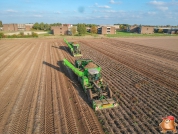
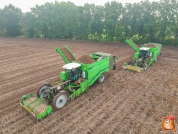
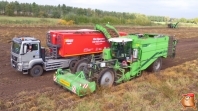
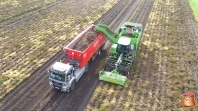
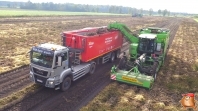
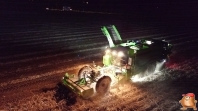
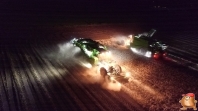
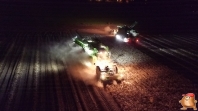
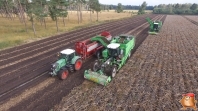
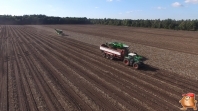
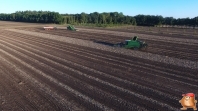
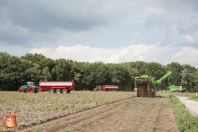
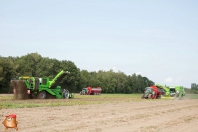
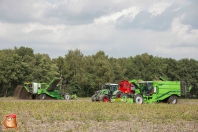
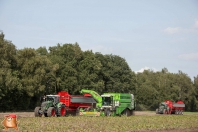
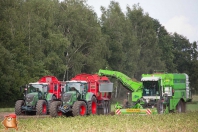
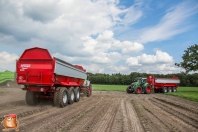
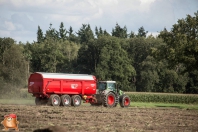
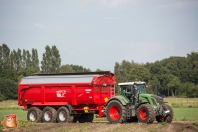
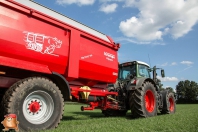
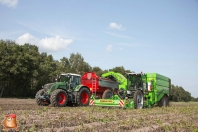
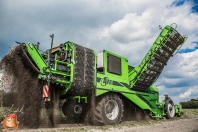
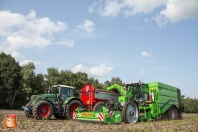
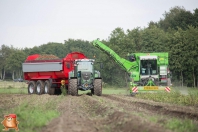
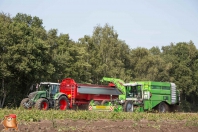
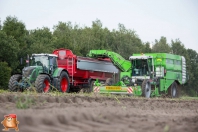
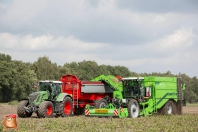
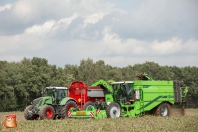
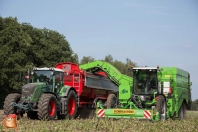
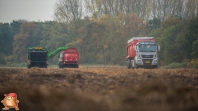
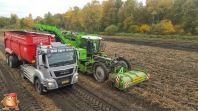
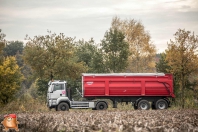
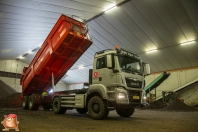
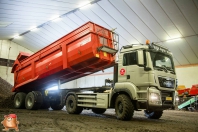
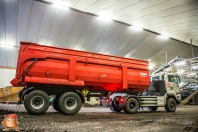
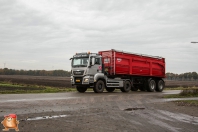
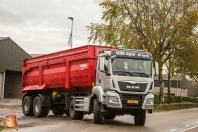
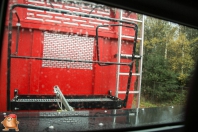
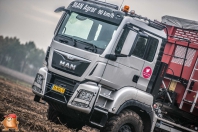
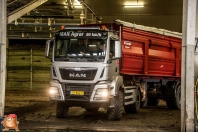
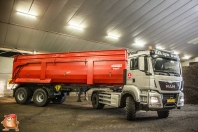
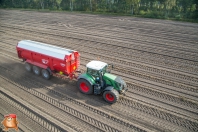
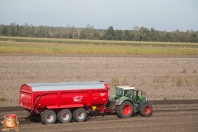
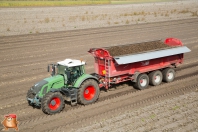
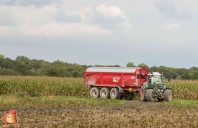
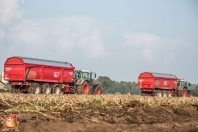
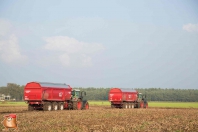
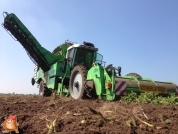
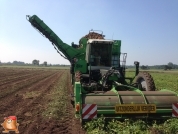
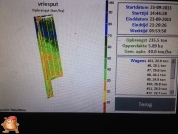
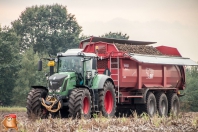
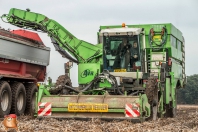
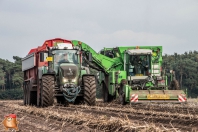
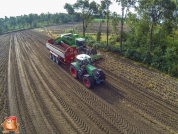
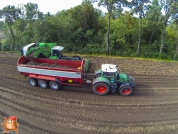
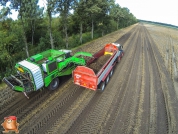
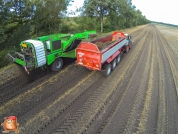
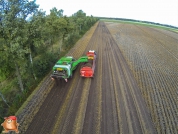
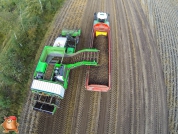
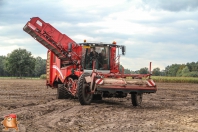
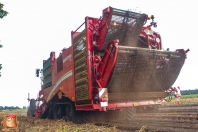
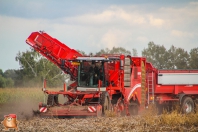
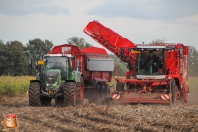
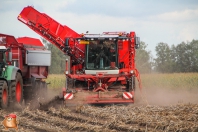
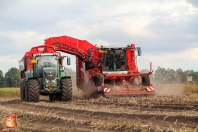
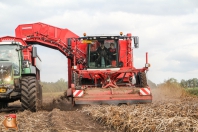
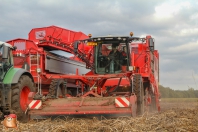
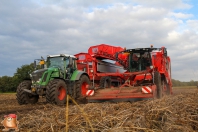
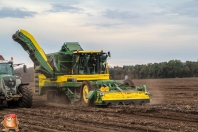
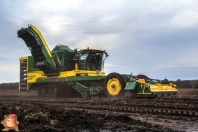
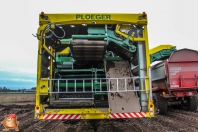
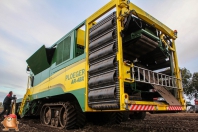
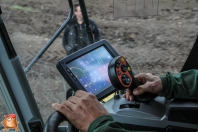
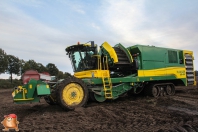
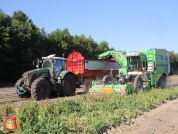
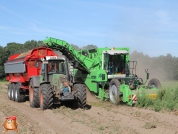
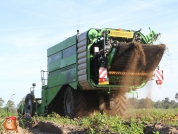
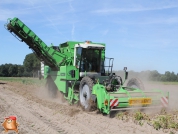
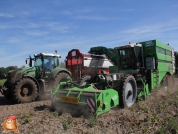
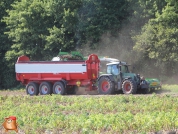
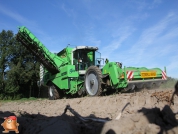
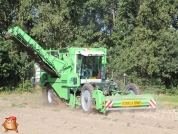
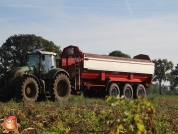
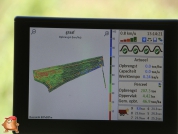
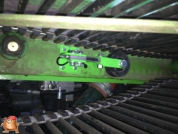
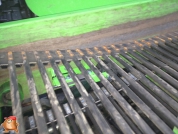
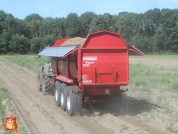
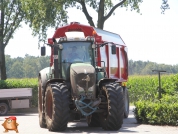
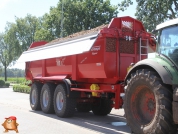
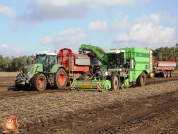
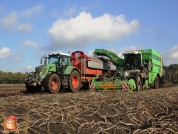
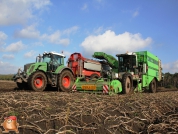
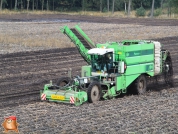
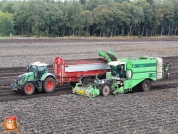
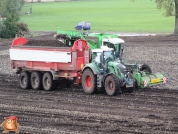
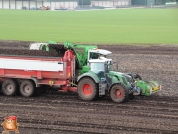
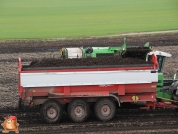
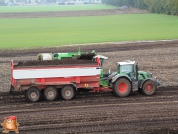
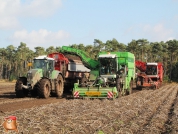
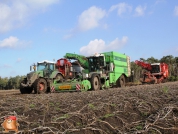
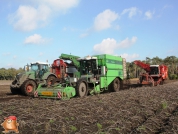
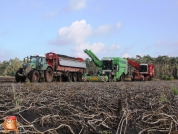
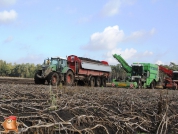
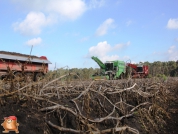
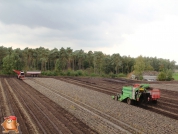
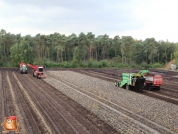
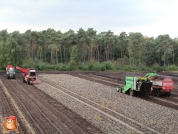
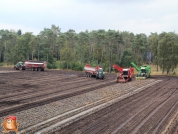
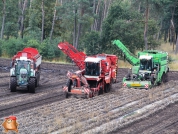
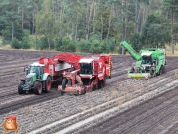
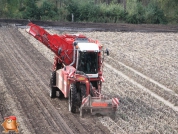
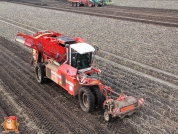
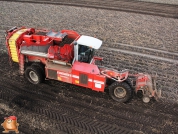
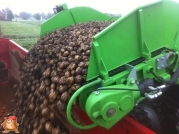
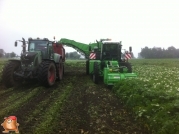
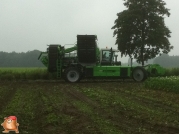
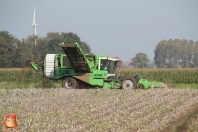
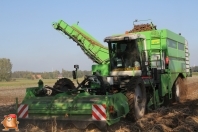
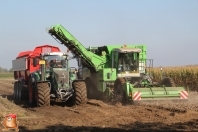
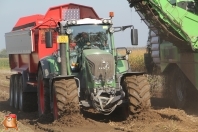
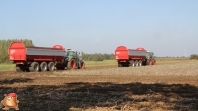
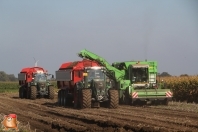
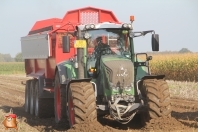
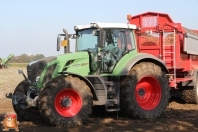
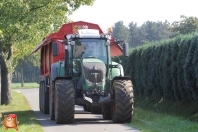
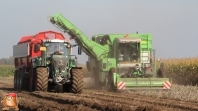
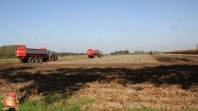
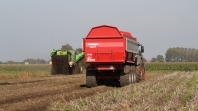
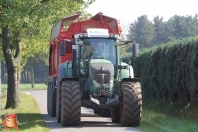
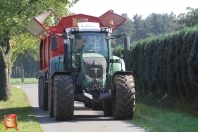
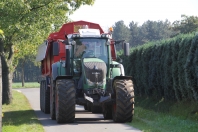
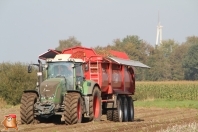
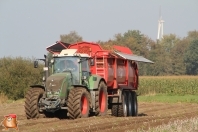
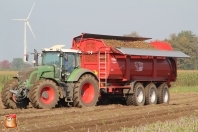
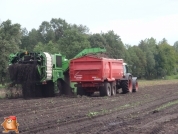
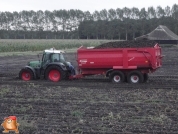
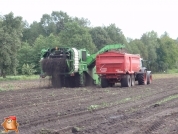
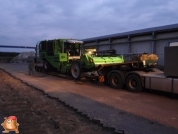
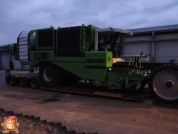
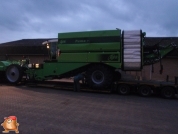
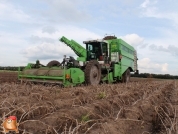
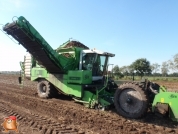
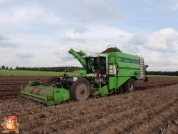
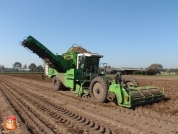
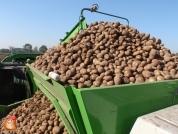
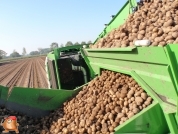
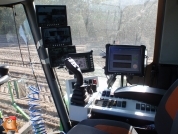
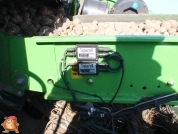
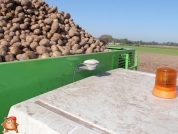
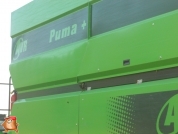
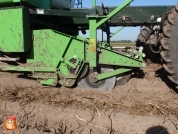
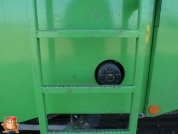
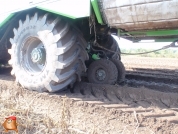
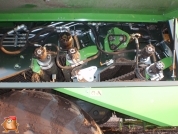
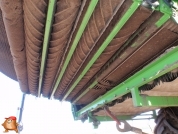
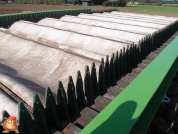
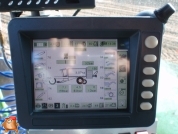
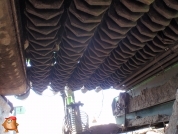
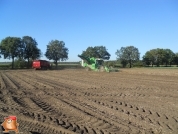
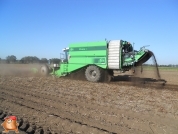
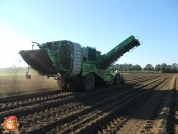
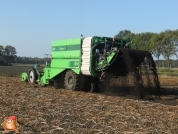
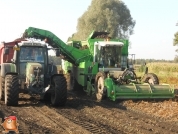
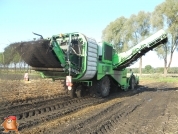
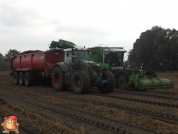
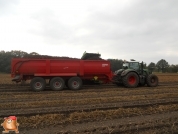
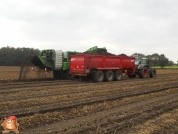
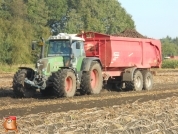
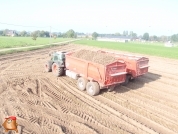
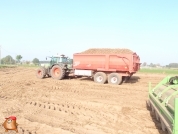
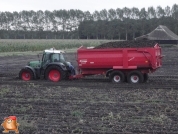
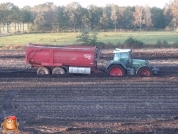
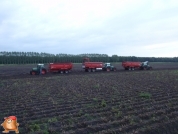
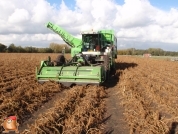
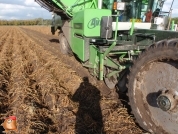
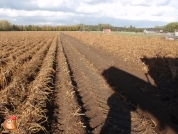
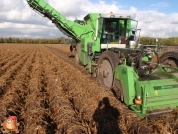
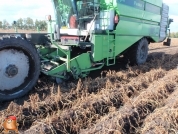
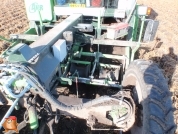
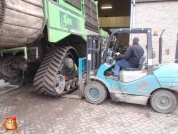
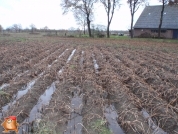
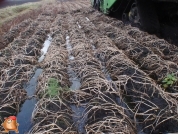
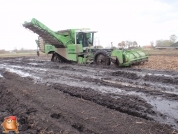
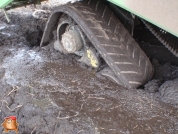
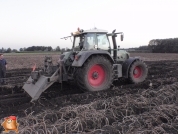
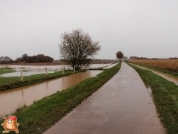
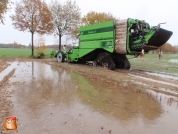
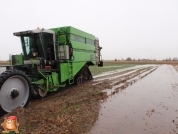
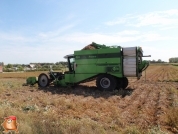
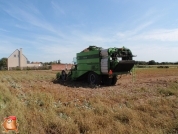
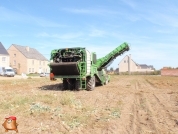
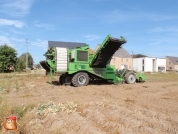
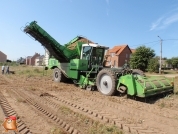
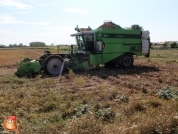
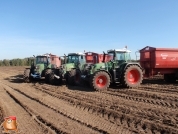
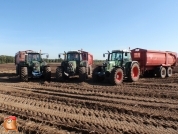
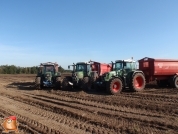
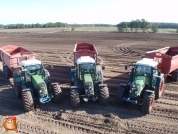
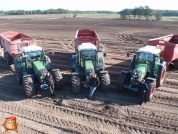
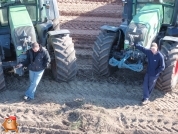
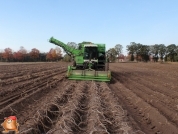
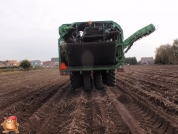
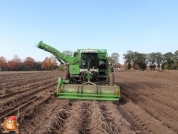
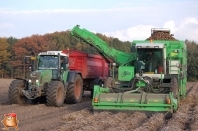
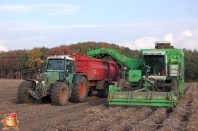
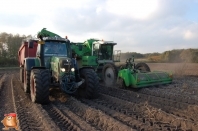
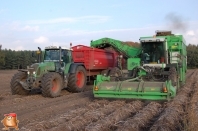
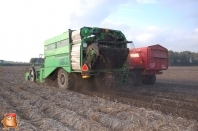
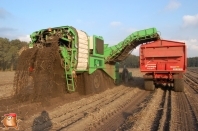
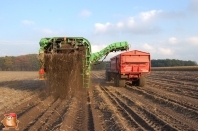
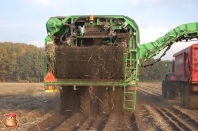
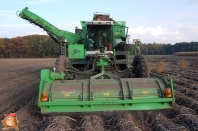
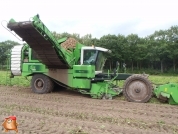
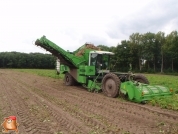
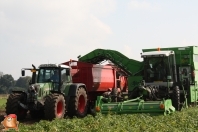
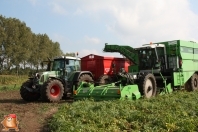
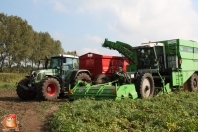
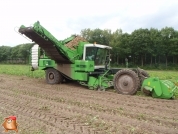
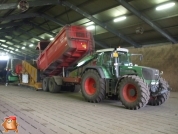
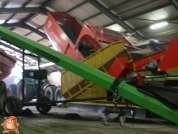
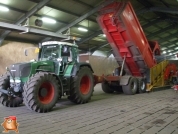
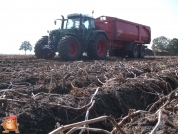
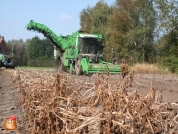
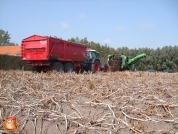
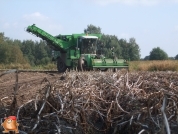
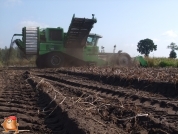
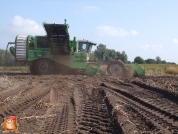
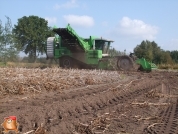
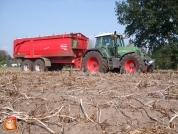
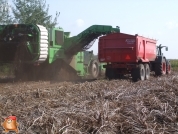
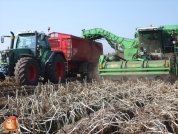
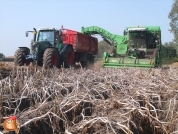
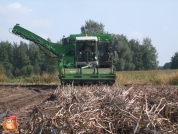
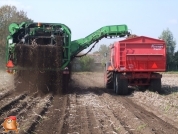
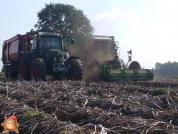
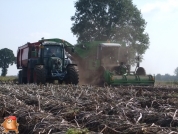
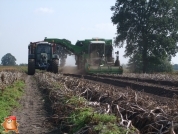
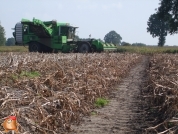
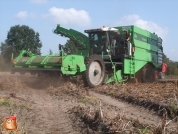
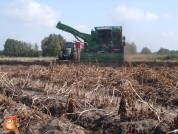
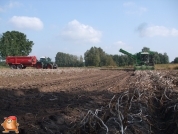
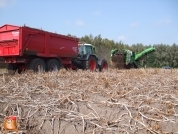
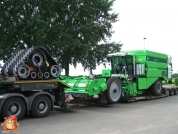
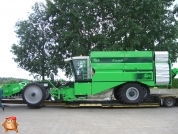
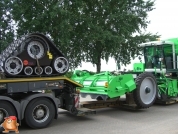
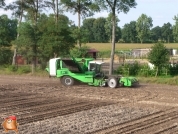
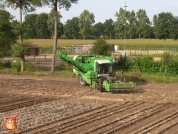
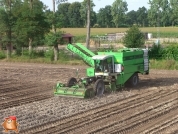
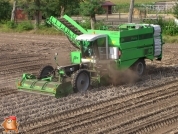
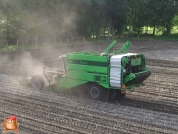
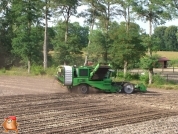
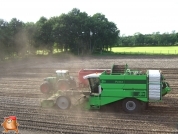
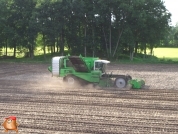
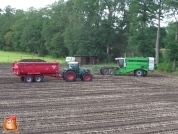
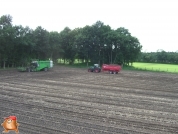
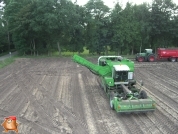
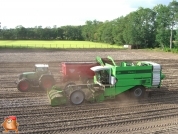
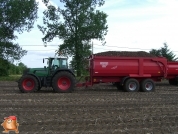
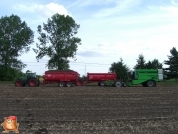

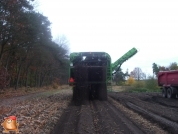
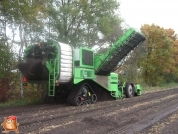
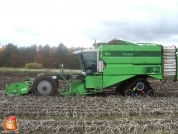
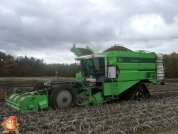
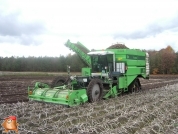
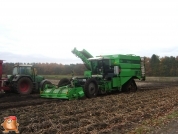
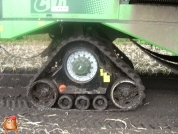
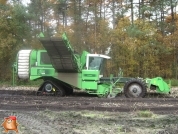
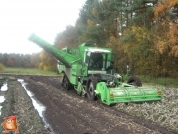
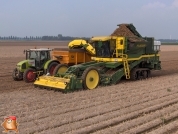


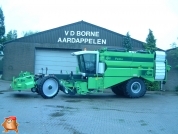

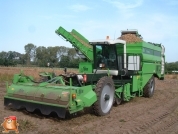
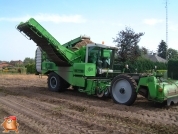
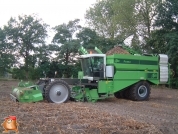
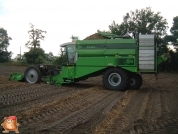
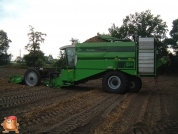
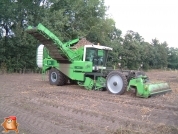


Social media
Bezoekers online: 28